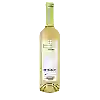Top 100 wines of Châteauneuf-du-Pape - Page 3
Discover the top 100 best wines of Châteauneuf-du-Pape of Rhône méridional as well as the best winemakers in the region. Explore the varietals of the wines that are popular of Châteauneuf-du-Pape and the best vintages to taste in this region.



































































































